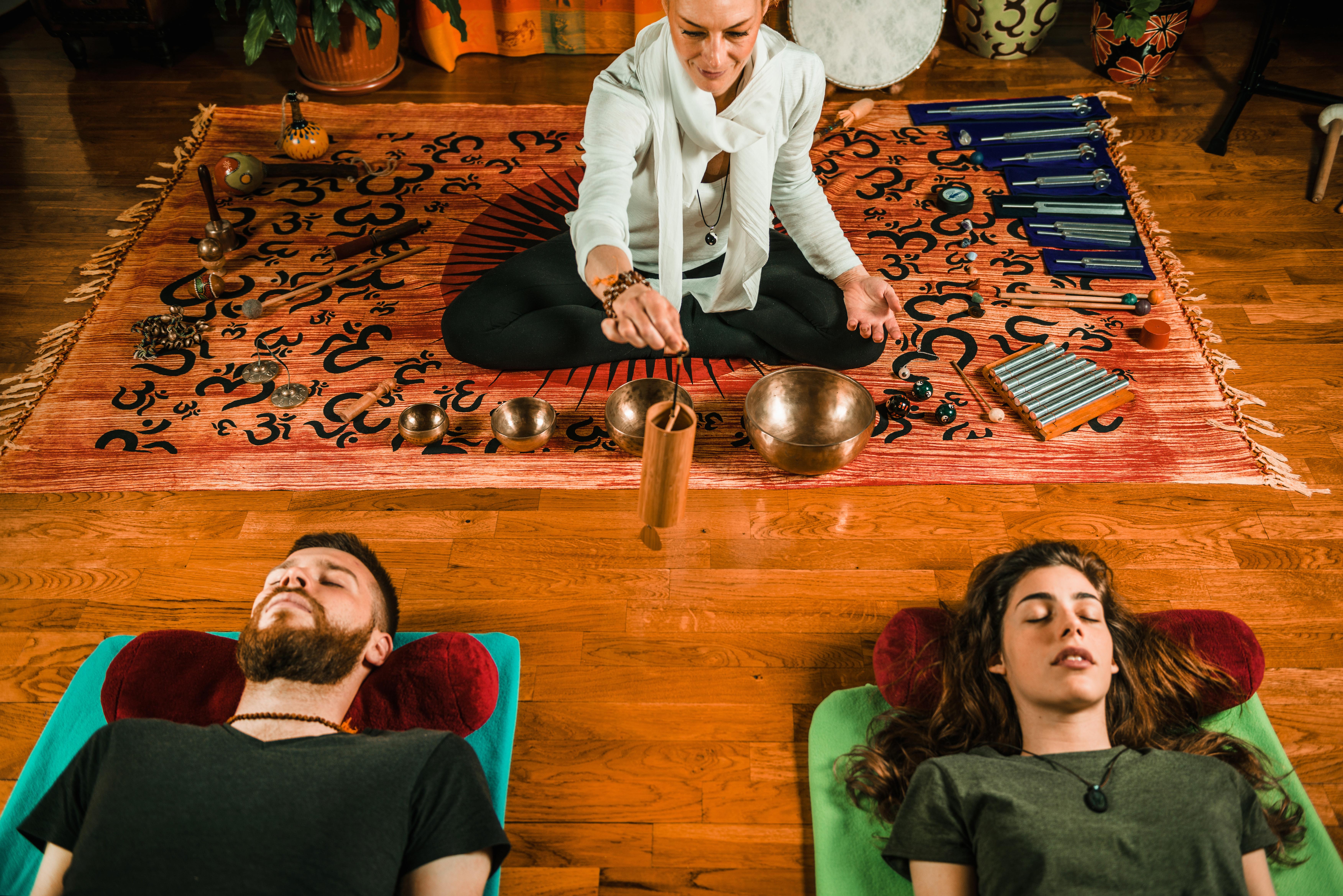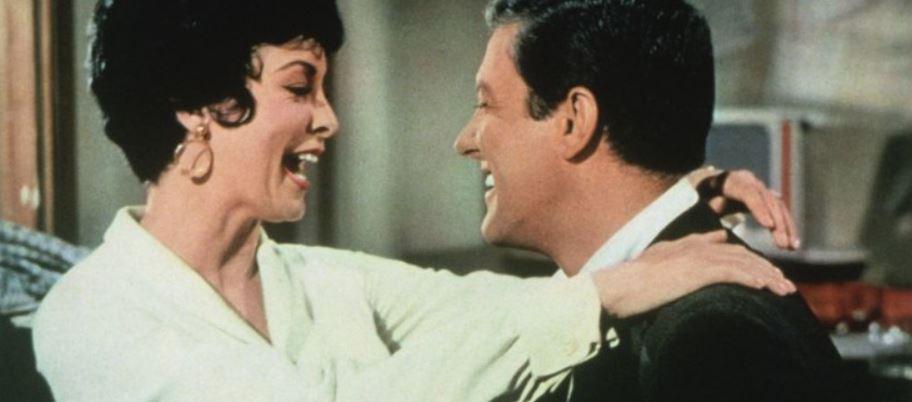ANDREW HORN: So, you've all had that moment where you're at a bar, you're maybe dancing a little bit, moving around. You see someone looking at you out of the corner of your eye and then your movements become a little more constricted. You become a little more in your head and you're worried about what they might think about you. So that's that external motivation. In any moment you can ask yourself, 'Am I doing this because I want to, or because I think people will like it? Am I doing this because I want to or because I think people will like it?' If we're basing it off of the reality that someone else will like it we'll never really know. We open ourselves up for that social anxiety. The fear of negative judgment, the unknown of external validation. So, we can always ask ourselves, 'What do I want to do right now? What is interesting to me? What would feel good to me?' And act off of that to eliminate social anxiety to bring more confidence into our conversations. So, that's how we find our authentic voice and use it. And your authentic voice is a deep down understanding of who you are, what you care about, and what you believe. And it's only when we have that foundational understanding that we're able to bring confidence into social situations. Because if we're not basing our actions off of this internal understanding, we're constantly looking for external validation, for other people to tell us what is cool, what is acceptable, what is appropriate. And if you look at the actual definition of social anxiety it's literally the fear of negative judgment. So again, it's based in that external validation.
AMY CUDDY: In your sort of day-to-day life when you're not facing one of these big challenges you're naturally expressing who you really are because you're not afraid to tell your friends what you care about or show your family who you really are. When you get into those stressful situations the last thing you're thinking about is, 'I need to make sure that I show them exactly who I am.' And so instead showing them who you are becomes very threatening, and that wall goes up and now you can't access those things. Even if you want to you can't access them because you're into kind of fight or flight mode.
ANNE MARIE ALBANO: The fight or flight response evolved to protect us. So there's two components to it. The oldest being the amygdala, which is deep in the brain in the reptilian part of our brain, signals whether we should fight something, flee something, or freeze. When it goes awry is when it's perceiving immediate danger that really isn't there. Somebody's heart starts to race and they think, 'Oh, my goodness. Is something wrong with me?' That's panic, and that can send somebody into a panic attack, which is the clinical manifestation of the fight or flight response. The other thing with anxiety is again, as we evolved and became thinking human beings and started building communities and cities and civilizations, is our brain evolved and there's the cortex. It's within the cortex that we think. It's within that system that we worry. And so we can worry ourselves into states of anxiety where we are fraught and not knowing what to do and we actually get stuck with anxiety, and so we're tense and irritable and upset. Anxiety is perfectly normal. In any form it's perfectly normal. Having your heart racing because somebody is walking behind you and you don't know who it is, is kind of normal. But if you let that happen to you when you're sitting alone at home and you start having panic, then that gets out of control.
HORN: The American Psychological Review just put out a study a couple of years ago and they found out that 60 percent of all people identify as struggling with shyness or social anxiety. Sixty percent. So if you've struggle with that kind of intimidation, if you've had that self-critical internal dialogue you're in the majority. And so you need to be easy on yourself and say that those feelings are natural and they're ubiquitous. Everyone has those. And so when we have those feelings we should notice that most times when we have that kind of intimidation factor we feel unworthy. We're comparing ourselves to others. We're looking at other people and saying oh wow, they're so much smarter than I am, or oh wow, I'm never going to be that good. And so comparison is the thief of joy. If we're constantly comparing ourselves with other people we're not going to be able to enjoy the process and it's going to be very hard to maintain the effort and energy that it takes to be really good at something. So what's more important, what's more effective to focus our energy on is what we want to be really good at and comparing ourselves with who we were yesterday. If all we do is focus our attention on being better than we were the day before, we can live that process for the rest of our life. Because again, knowing who you are, what you care about and what you want to be is something that you'll keep defining for the rest of your life.
CUDDY: When people self-affirm it is the simplest exercise. It really is one, what are your core values? Two, why do they matter to you? Three, write about a time when you expressed this. When people do that it dramatically lowers their stress and anxiety, self-reported stress and anxiety. It lowers their neuroendocrine measures of stress and anxiety, like cortisol and epinephrine, and it allows them to perform much better in a stressful task. So somebody might self-affirm and write about why family matters to them and then they go take a really hard math test. Not only are they less stressed out, they actually do better on the math test. Now, what's funny about it is it's not somebody saying to him or herself I'm a math genius. I'm a real Einstein. It has nothing to do with math. The self-affirmation can have nothing to do with math. Why does it work? It works because when we are reminded of who we really are, it's okay to not be perfect. So you can go into that stressful situation and know that no matter what happens you are leaving it as yourself. So, I think it's a pretty wonderful little intervention.
HORN: So I learned this from my friend Andrew who's a hypnotherapist here in New York City. He works with a lot of the Fortune 500 brands, quickest growing startups. And basically what he talks about with some of these leaders is helps them to identify where they have anxiety in their leadership roles and helps them to overcome that and really achieve peak performance. And so when I first met him I said, 'Okay, so how would you use hypnosis to alleviate something like social anxiety?' And so what he would tell me is he'd say, 'Okay, so what I want you to do is think about a social situation where you might have some anxiety.' And I'd say okay, 'I'm going into a big tech conference with a bunch of really influential people and I might be nervous,' and he'd say 'Articulate the undesired state of being. What is that?' And so I'd say, 'I'm worried that I won't have anything to say. I'm worried that they won't think that I'm high up enough to actually care about what I'm going to say. I'm not going to add value.' He'd say, 'Great. Just by actually articulating the undesired state you are naming it and you're taming it. You're going to be more aware when those undesired states manifest and that's the first step.' And so he said step two is that you have to articulate the desired state of being. And our brains are really good at telling us what is going to go wrong in social situations because it wants to keep us safe. It wants people to like us and this traces all the way back to caveman days when we were much more tribal. And if we were ostracized by the group we were going to get kicked out of the group and then it was a literal death sentence. And so our brain is still responding with that type of intensity to social ostracization. And so, articulate the desired state of being. So, I want you to tell yourself three ways that you would like to feel in this social situation. For me, coming into that conference I'd say, 'You know what? I want to be authentic, curious and present.' And so now I've given myself three desired states of being and I can even take the first letter of each of those desired states of being – authenticity, curiosity, presence – ACP. So anytime any of those fears or anxieties actually pop up I can just revert right back to ACP and those are intrinsic motivators, ways that I want to feel. And I can say if I wanted to be authentic, if I wanted to be curious or present what would I do right now. And now I'm grounded in the present moment, in those desired ways of being. I'm in the present moment. I'm back towards accomplishing and creating presence in conversation.






